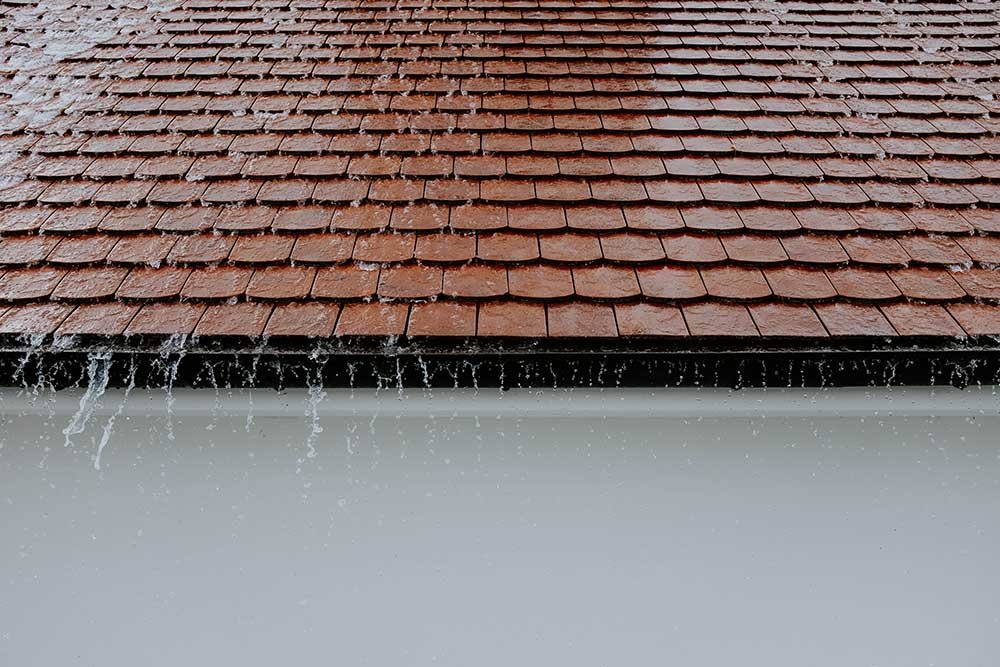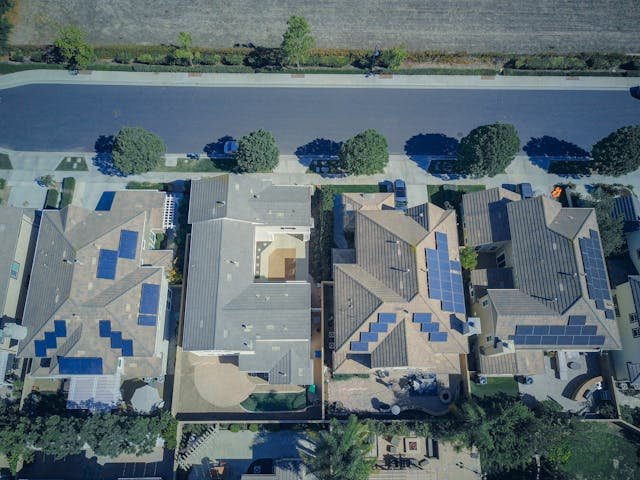Hailstorms may cause havoc on your home, especially your roof, and can be terrifying as well as destructive. Even though it might be difficult to foresee when a hailstorm will occur, it’s crucial to remain watchful afterward and check your roof for indications of damage. Early hail damage detection might help you start repairs quickly and avoid more serious problems. Here are five warning indicators to look out for:
Dented or Bruised Shingles
Hailstorms may be unrelenting, pelting your roof with ice pellets that damage it permanently. Shingles that are dented or damaged are among the most obvious indications of hail damage. Examine the surfaces of your shingles closely to provide a complete inspection. Because asphalt shingles have a softer texture than other roofing materials, hail damage sometimes appears as tiny, circular depressions or bruises. It’s important to remember that hail damage may or may not go through the shingle’s surface. The integrity of the shingles can be compromised by even little dents or bruising, which may eventually cause leaks and other problems. Therefore, a thorough inspection is necessary to spot any damage and guarantee the long-term functionality of your roof.
Granule Loss
Hailstorms can cause granule loss in addition to damage to your shingles’ surface. The protecting granules on shingles surfaces act as a barrier against the sun’s damaging UV rays and add to the overall toughness of the shingles. You could see granules strewn about your gutters or the exterior of your property after a hailstorm. Granule depletion is a serious warning sign since it might cause your shingles to age prematurely. The underlying shingles material is exposed to the environment more and more as the granules deteriorate, increasing the likelihood of additional damage and moisture intrusion. Granule loss concerns must be addressed right away to maintain your roofing system and keep your shingles intact and able to provide protection.
Cracked or Split Shingles
The relentless assault of hail on your roof can lead to shingles breaking or shattering, leaving them susceptible to water infiltration. When conducting a comprehensive post-hailstorm roof inspection, pay meticulous attention to the condition of your shingles. The presence of visible splits or cracks in the shingles is a clear indicator of structural deterioration that necessitates immediate repair. These openings provide rainfall with a direct pathway to penetrate beneath the shingles, potentially resulting in leaks and water damage within your home. To preserve the waterproof integrity of your roofing system, it is imperative to identify and address broken or split shingles promptly. By attending to these issues without delay, you can prevent further damage and protect your property against moisture-related difficulties. For residents in the Austin area, seeking professional assistance, such as Austin hail damage roof repair services, it is advisable to ensure the thorough and effective repair of hail-related damage.
Missing Shingles
A violent hailstorm can have an impact that is so great that it completely or partially destroys the shingles from your roof. Your roofing system becomes immediately vulnerable when there are no shingles because the underlying layers are exposed to the elements. Look closely at the surface of your roof during your post-hail examination for any voids or exposed spots where shingles were formerly firmly in place. A prominent sign of hail damage is the appearance of missing shingles, which calls for immediate treatment. If these places are left exposed, they may deteriorate faster, develop leaks, and develop structural problems. It’s critical to address the missing shingles as soon as possible and replace them to maintain your roof’s barrier of protection to reduce these threats.
Soft Spots on the Roof
The structural integrity of your roof may be compromised during hailstorms, creating soft patches that might cause more serious damage. If you lightly touch the surface of the roof, you can feel these soft places even though they might not be immediately noticeable from the outside. The underlying flooring or foundation has been damaged if you come across parts that feel soft, spongy, or under pressure. Soft spots are a major problem since, if ignored, they can result in more involved and expensive repairs. Your roof’s structural elements may become more vulnerable to hail damage, making it less able to survive subsequent weather occurrences. Therefore, to preserve the general strength and stability of the, it is essential to identify and swiftly correct weak places.
Conclusion
In conclusion, recognizing hail damage to your home’s roof is crucial for preserving the building’s integrity and avoiding additional problems like leaks and water damage. Please consult a qualified roofing contractor as soon as you suspect damage from hail so they can evaluate the amount of the damage and provide recommendations for the best repairs or replacements. Quick action can protect your house and prolong the life of the roof.
















